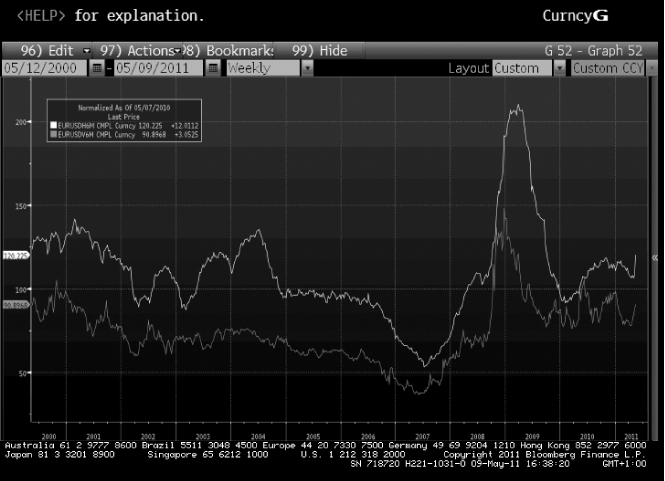24.4 Volatility
24.4.1 Overview of Models
Another assumption that the Black–Scholes framework relies on is that the volatility is constant over time (geometric Brownian motion) and that the same volatility may be used to price options at different strikes and at different maturities. This is simply not consistent with market observations, especially in FX. Of course, the volatility surface did not exist back in 1973. However, the smile15 in volatility across different strikes consistently featured in the market in the 14 years after the market crash of 1987.16 The volatility of the FX market changes over time. See Figure 24.8 for an illustration.
Figure 24.8 Implied volatility versus historic volatility EUR/USD.

Time-varying volatility is another source for the risk in options-market making—and again another source for the creation of a derivative. For example, the FVA is quite a popular structured product offered by many banks in which the buyer has to purchase an ATMF straddle for an agreed maturity, at a starting at a point in future.
People are learning machines, who always adapt to new circumstances and learn from the past. The Black–Scholes model became a reference point, a starting point for any model that learnt what went wrong in the past in terms of the initial assumptions made and adapted to new market paradigms. The introduction of the jump component, making the volatility ...
Get Handbook of Exchange Rates now with the O’Reilly learning platform.
O’Reilly members experience books, live events, courses curated by job role, and more from O’Reilly and nearly 200 top publishers.

